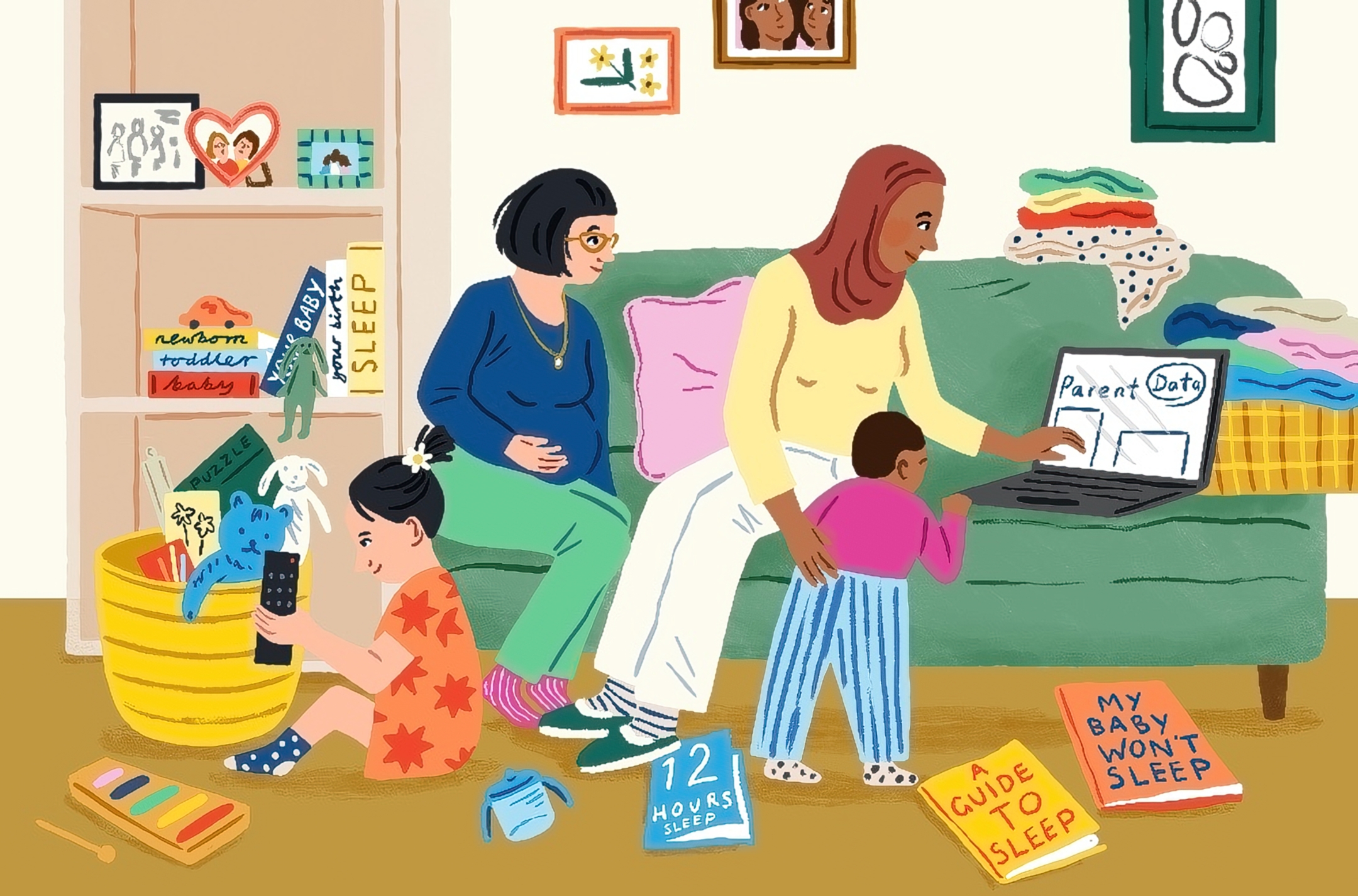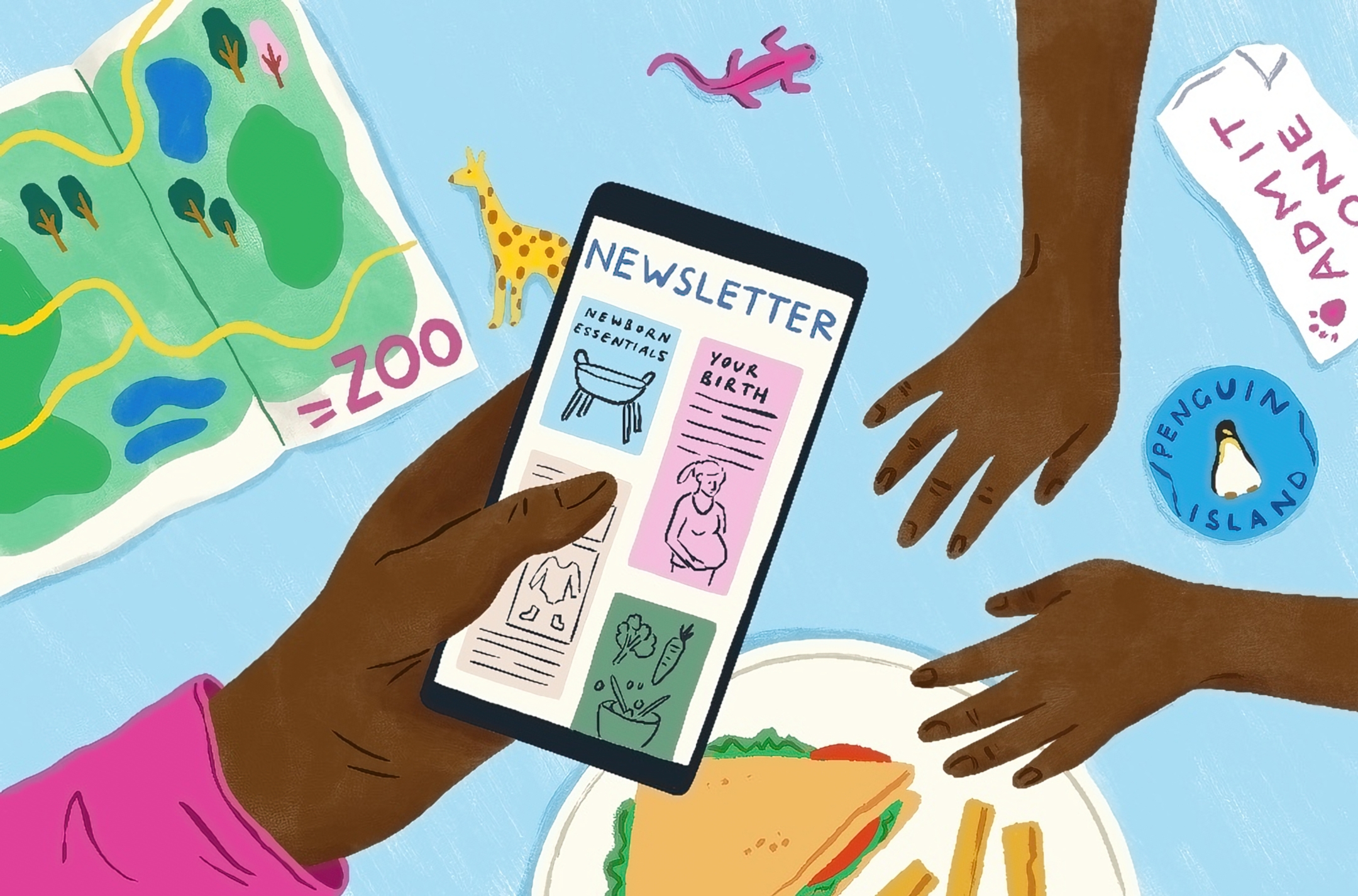I heard about Virginia Sole-Smith’s new book, Fat Talk: Parenting in the Age of Diet Culture, a few months ago and was so excited I immediately insisted on reading it and including something in the newsletter. We recorded this interview then, in large part because I was afraid I would miss having the chance to do it.
I’m a big fan of Virginia’s — she is a journalist, an author, a podcaster, the writer of the excellent Substack newsletter Burnt Toast, and a mom. We do not always agree, but I have tremendous respect for her and I always, always learn something when we talk. The last time we talked, my kids got more Halloween candy, so I’m sure they are enthusiastic about this conversation.
Her new book is about kids and weight and food, and I think it is an absolute must-read for all parents, especially for that moment when your child asks, “Does this shirt make me look fat?” and you know there is a right thing to say, but in the moment you don’t know what it is and instead you melt into a floor puddle, never to be seen again. This book will help you.
This conversation feels personal to me. As a child of the 1980s, I have many of the standard ’80s hang-ups about weight and food. Ironically, perhaps, given the reputation of the sport, my current obsession with running performance has had big positive impacts, since I’ve realized I need to eat more to run fast. Still, a big parenting fear of mine is passing my food stuff on to my kids. So I’m personally grateful for this book and this interview.
This episode is best as a listen, I think, and you can subscribe to my podcast as always and listen there. But we’ve transcribed it below if you prefer to read.
Before we start the conversation, I actually want to put out in this conversation that I personally find these issues really challenging. And I’ve talked about this before, probably even with you. I have a lot of stuff about weight and food control, which is part of my personal journey as a child of the 1980s and a teenager of the 1990s who went to a boarding school. And so part of why I think this book is so important is because one of my main parenting goals is not to pass this particular aspect of my stuff on to my kids. And I think I am not alone in that. So that’s how I am coming into this.
And what it really comes down to is I started to understand the concept of anti-fat bias and how prevalent that is in our culture, particularly how prevalent that is in a lot of the science getting done on weight and health. And then in the media conversations about that science and then every other conversation that we have about that. So naming that bias, unlearning that bias for myself, constant work in progress.
But the goal of the book is to help parents in particular start to wrestle with this. Because exactly as you said, we don’t want to pass this stuff on to our kids. I think our generation of parents in particular is keenly aware that the 1980s and 1990s and early 2000s diet culture we grew up in got a lot of things wrong, but I don’t think we know yet where to go next. And so I wanted to try to start to answer those questions. And what I encounter all the time is parents saying exactly what you said: I don’t want my kids to worry about their bodies the way I worry about mine. I don’t want them to worry about calorie counting, etcetera etcetera. But I also don’t want them to be fat. That sort of like rock and hard place is a really difficult place to be. And so what Fat Talk does is it helps parents start to understand why we have to stop fearmongering around fat so much, why a lot of what we understand about weight and health is wrong — or at least vastly overstated — and just find a new way through all of these issues.
Because what most diets teach you to do, no matter how much we — I was going to say sugarcoat it, but of course that’s not what the diets are doing…
This is not to say everyone who diets ends up with an eating disorder. Of course it’s not that clear-cut. There are many other contributing factors to eating disorders, like family history, genetic components, other environmental factors that come into play. So it’s always a multifaceted picture, but certainly if you teach someone the literal behaviors of an eating disorder, you are giving them some tools. If they are susceptible to going into a more dangerous place with those behaviors, you’ve given them the roadmap. And the problem is as parents, you don’t know, right? You might have some guesses based on your own history or your family history, but you don’t know for sure whether your kid is going to be able to breeze through a six-month lifestyle intervention and come out no worse for wear, or if that’s going to be something that’s going to set them up for these future issues.
The other thing, though, that’s really interesting is often when they do include some follow-up around disordered eating, what they look for are things like binge eating, maybe purging, compulsive feelings around food. They look for “overeating” because that’s what they expect kids in larger bodies to do. They don’t track for disordered symptoms like restriction or skipping meals because they don’t think that kids in larger bodies do that. Number one, because there’s this baked-in bias that everyone in a bigger body eats compulsively — not true. And number two, because that’s what their plan taught them to do, right? The plan taught them restriction. So they would like the restriction to continue. It’s a whole framework thing. They wouldn’t even consider that a problem. They’re not like, Oh, by the way, did we restrict you into an eating disorder? They’re not checking for that.
Anyone who has gone through periods of dieting can tell you thinness doesn’t automatically solve all of these problems.You haven’t given these kids resilience tools. You aren’t addressing the fact that their school is not addressing this larger issue of weight-based bullying, or that it’s coming from teachers or coaches or parents, etcetera. You’re not doing anything to address those real issues. You’re just saying, if we can make you less of a target, maybe it’ll be fine.
So I think we have this ethos around food that fruits and vegetables, especially vegetables, are the holiest possible grail of what you want your kids to eat. And therefore every other food choice they make is a failure to attain that gold standard. And that is such a problematic way of approaching this, because it sets up that restriction we were just talking about. If every time they pick cake over apples, some little part of you dies — and I get why it dies; it died for me for a long time too, I get it — but if that is happening, your kids know you don’t think that’s the right choice. And now you’ve made cake that much more powerful to them because it’s forbidden in some way. And the apples are much less interesting because that’s what you want them to have and they have to eat them in order to achieve the cake.
There’s great studies on this. The “Finish your soup” study by Leann Birch is the classic, where half the kids were told if you finish your soup, you can get dessert and the other half were not given that. And they saw that the kids who were told to finish their soup liked the soup less, ate less of it, and were much more fixated on How do I get to the dessert? So that fundamental aren’t-apples-better thing is just continuing to hold on to that idea. Even if you’re trying so hard to embrace cake.
I think a better approach is to serve apples and cake together and not make a fuss over which one your kid picks. When I say “better,” I want to be clear: I don’t think this is perfect. I think it’s really hard for people, and a lot of the advice we get around this doesn’t make enough space for the fact that it is not that simple to just neutralize food. A lot of us have a lot of work we have to do to get to that place. But I think if you can just fundamentally keep coming back to I don’t want my kid to have a fraught relationship with cake, then that can be a really helpful motivator.
And what you will likely see with many kids is that over time, not immediately, but over time, the fewer restrictions and anxiety you’re placing around the “treat foods,” the more they can take or leave those foods. And I want to be really clear — that is actually not the victory to me. I was helping my 5-year-old pack her lunch, and she was like, “Oh, I don’t want a treat today.” And I wasn’t like, “Yes! We aren’t having a treat!” I was like, “Huh, all right. You’re not in the mood for the treat.” Obviously Oreos have gotten old. We’ve had this box of Oreos sitting in the pantry for three months, and we’re all over them. No one’s eating the Oreos. And that’s interesting to see, because I think that feels so foreign to so many people. How could you have a box of Oreos in your house and forget about it? And it’s not the victory that we aren’t eating the Oreos, it’s the victory that nobody is stressing about the Oreos. Once we don’t have Oreos for a while, we eat them, we’re very excited. But then we move on and we can eat other foods. And so over time, this approach actually lets kids eat the apples, eat lots of other foods, and enjoy their treats without the stress.
And if you think broadly across parenting, we want that for so many things, right? We want kids, when they get into the teenager years and deal with pressure to party or have sex or whatever, we want them to start from listening, What feels good and safe in my body? That’s so fundamental. And if you think of your dinner table as a place to start practicing those skills, it matters so much less whether they eat the apple. It’s not about the apple. You’re teaching something much bigger.
There’s also some really interesting stuff that happens when you do put dessert on the table right alongside the rest of dinner. Especially for kids who are very fixated on treats, that can be a really good way to start taking that pressure off. If they can see that the plate of brownies is there, along with the salad, along with the pasta, along with whatever else, I’m going to get it. I don’t have to earn it. I don’t have to jump through hoops, I have access to it. That can take so much pressure off. Yes, it will mean they will only eat brownies for dinner for a while. No one has ever died of only eating brownies for dinner for a while.
Ellyn Satter, who’s a feeding therapist and dietician who really did a lot of pioneering work here with division of responsibility, this is an approach she encourages. And she says you would put out one portion of dessert along with the other foods so it doesn’t outcompete, but it’s there and the kids have that. And at the same time, if you do that, you also work in several other points during the week where they get more unlimited access to treats. Otherwise you’re going to find yourself battling over, “I want another cookie.” And you decided it’s only one cookie at dinner, and now it’s all falling apart. But if it’s like, “We only have two or three cookies with dinner,” when we bake cookies on the weekends and the tray comes out of the oven, everyone eats as much as they want because they’re fresh out of the oven and they’re delicious. And why would I ever count that? That’s just a joyous food experience, and we get to have what we want and there’s no guardrails around that. You let kids start to figure it out.
And you get comfortable with the fact that kids can eat a lot of a sweet and not die. Their stomach can hurt, they can learn from that experience. They can start to decide for themselves without you narrating, without you being like, “Your stomach hurts, huh? Guess I know what happened there.” You don’t need to get involved. It’s between them and their bodies. They can start to figure that out. But I know that can sound so scary to do.
I think Halloween is such a great example. Parents get so stressed about the sugar. But if you let kids enjoy, they get very discerning and they realize which kinds they like, which kinds they don’t like. And especially if you have picky eaters, which I do, I consider Halloween a victory night, because my kids will try flavors and textures that they wouldn’t normally try because they’re caught up in the excitement of Halloween, and that’s a pretty big win. If you have kids who don’t usually like mixed textures and now they’re eating a Snickers bar — good lord, it’s all mixed — it’s amazing.
And this is where easing off the “My goal as a parent is to get my kid to eat as many kinds of produce as possible” and thinking much more flexibly and broadly about what you want your family’s relationship with food to be and what eating can give your kids, it just creates so many more opportunities like this.
And we all have to shape those things the way that works for our family. But pulling back on meals as a place to achieve something food-wise, assuming that there isn’t a medical reason that that’s part of your meal, my guess is will liberate a lot of people.
And then concretely — this one might be tricky for some folks — but if there is a scale in your house, throw it out. I would say that is one concrete step a lot of people could take that would go a long way towards improving your family’s overall relationship with food and bodies.
Community Guidelines





















Log in
[…] the past several months, we’ve had a number of posts about weight, food, and health. I interviewed Virginia Sole-Smith about her book Fat Talk: Parenting in the Age of Diet Culture and, separately, […]